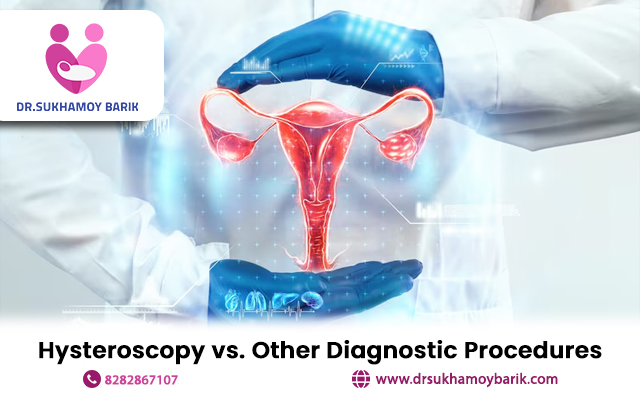In gynecological diagnostics, various procedures help doctors assess and diagnose conditions affecting the female reproductive system. Among these, hysteroscopy stands out as a versatile and minimally invasive technique. However, understanding how it compares to other diagnostic procedures like ultrasound, MRI, and laparoscopy is crucial for patients and doctors alike. The best hysteroscopic surgeon in Dum Dum has discussed in this regard.
What is Hysteroscopy?
Hysteroscopy involves the insertion of a hysteroscope into the uterus through the cervix. This allows direct visualization of the uterine cavity, enabling the diagnosis and treatment of issues such as abnormal bleeding, fibroids, polyps and adhesions. There are two types of hysteroscopy: diagnostic, which is used to examine the uterine cavity and, operative, which is used to treat identified abnormalities.
Hysteroscopy vs. Ultrasound
Ultrasound, particularly transvaginal ultrasound, is often the first-line diagnostic tool for gynecological issues. It uses sound waves to create images of the uterus, ovaries and other pelvic structures. While ultrasound is non-invasive, painless, and widely available, it has limitations in detailed visualization. For instance, small polyps or subtle intrauterine adhesions may be missed.
Hysteroscopy offers a direct view of the uterine cavity, providing more precise and detailed information. It can detect abnormalities that ultrasound might miss and allows for immediate treatment during the same procedure. However, hysteroscopy is more invasive and requires anesthesia.
Hysteroscopy vs. Laparoscopy
As per the best gynecologist in Dum Dum, laparoscopy is another minimally invasive procedure, but it differs significantly from hysteroscopy. It involves inserting a laparoscope through small incisions in the abdomen to view the pelvic organs externally. Laparoscopy is particularly effective for diagnosing and treating conditions like endometriosis, pelvic adhesions and ovarian cysts.
While both laparoscopy and hysteroscopy are minimally invasive, hysteroscopy is specifically focused on the interior of the uterine cavity. Laparoscopy offers a broader view of the pelvic region and can diagnose conditions outside the uterus. However, hysteroscopy is less invasive, with no abdominal incisions and has a quicker recovery time.
Choosing the Right Procedure
The choice between hysteroscopy and other diagnostic procedures depends on the patient’s symptoms, medical history and the specific condition being investigated. For example:
- Abnormal Uterine Bleeding: Hysteroscopy is often preferred for its ability to directly visualize and treat the uterine lining.
- Suspected Fibroids or Polyps: While an ultrasound can identify these growths, hysteroscopy allows for their immediate removal.
- Complex Pelvic Conditions: MRI or laparoscopy may be more suitable for detailed assessment of conditions like endometriosis or extensive adhesions.
Conclusion
Hysteroscopy is a valuable tool in gynecological care. Its ability to provide direct visualization and immediate treatment sets it apart from other diagnostic methods like ultrasound and laparoscopy. However, the choice of procedure should be decided based on the patient’s specific needs, with careful consideration of the advantages and limitations of each method. Consulting with the best hysteroscopic surgeon in Dum Dum can help determine the most appropriate approach, ensuring accurate diagnosis and effective treatment.
 8282867107
8282867107 sukhamoy83@gmail.com
sukhamoy83@gmail.com
